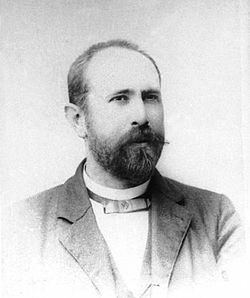Native name Thallóczy Lajos | ||
 | ||
Resting place Kerepesi cemetery in Budapest Nationality Austrian Empire, Austria-Hungary Similar Béni Kállay, Konstantin Jireček, Lajos Kossuth, Mór Jókai, János Arany | ||
Lajos Thallóczy, (Also, Ludwig von Thallóczy, Ljudevit Taloci, born Ludwig Strommer) (8 December 1857 – 1 December 1916) was a Hungarian historian, archivist and high public servant. He was a mysterious person of the Austro-Hungarian monarchy who played a very significant role in the Balkans. Because of his mentors Gyula Andrássy and especially Béni Kállay he became an inevitable counselor in all Balkan affairs even to the emperor Franz Joseph himself, to ministers and to the government of the empire. He was also a member of the Hungarian Academy of Sciences.
Contents
Bosnia
Thallóczy became interested in heraldry in a period when scientific circles became interested to select the "right" coat of arms for Bosnia and Herzegovina. His main interests were Bosnian history, especially genealogy, heraldry and biographies of prominent individuals from its medieval period. Supported by Thallóczy's selective use of tendentiously interpreted sources aimed to satisfy the political aspirations of the empire by representing a historically connected fate of Bosnia and Herzegovina to Austria-Hungary the government imposed his proposal for the official coat of arms of Bosnia and Herzegovina in 1889. He introduced ethnically neutral yellow and red combination of colors to confront "misuse of Serbian and Croatian colors". He was referred to as the 'creator of Bosnia'.
Thallóczy was transferred to Vienna at the request of Béni Kállay. He was in charge of cultural and educational issues in Bosnia and Herzegovina. He published numerous Cyrillic and Latin charters, and also works about the duke Hrvoje Vukčić, history of Jajce and numerous other, Bosnia-related, subjects, with the main findings published in the book Studien zur Geschichte Bosniens und Serbiens im Mittelalter, published in Munich and Leipzig in the year 1914.
Albania
Before the First World War Austria-Hungary was significantly interested in Albania because of the political and military plans it had on Balkans and sent its scholars to investigate it. Partly because of this interest Thallóczy was employed within Austria-Hungary administration with title of court counselor to create one work on popular history of Albanians and one textbook. Together with Milan Šufflay and Konstantin Jireček he wrote two volumes of his monumental work Acta et diplomata res Albaniae mediae aetatis illustrantia (English: Documents and Diplomatic Affairs illustrating the Middle Ages in Albania) published in 1913 and 1918. Controversial Serbian historian Milorad Ekmečić credits him with having designed the 14th-century flag and coat of arms of Albania (the black double-headed eagle on a red banner).
While some circles in Italy had plans to establish closer connection of Montenegro and Northern Albanian Catholics under their leadership, Thallóczy was one of the promoters of the plans of Austria-Hungary for strengthening the otherness between them and confronting Albanians and Slavs. The aim was to counter advances of Serbia and Montenegro on Adriatic coast. In December 1897 Thallóczy stated that it is necessary to take actions to prevent population of Albania being attracted to Montenegro. According to Fan Noli Thallóczy proclaimed that opinions about Skanderbeg's Serbian descent are legends.
Serbia
During World War I he was civil counselor of the military administration in occupied Kingdom of Serbia. Thallóczy died in a train accident while returning from the funeral of the emperor Franz Joseph I.
